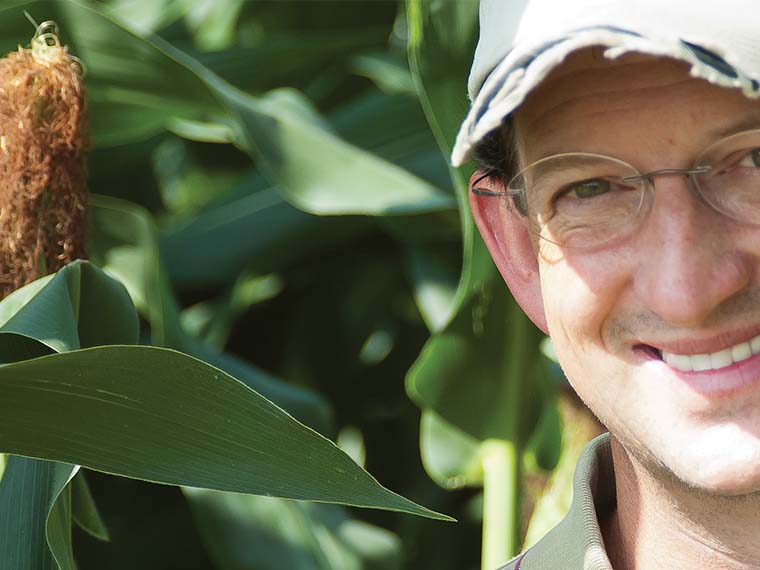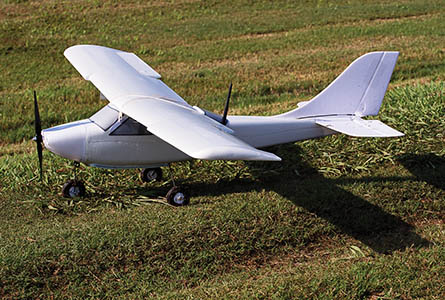MSU researchers explore early corn planting
Timing counts for a lot when it comes to planting corn. That's why Mississippi State University scientists are researching the effects of planting date, plant population, and hybrid selection for field corn.
By: Vanessa Beeson
The information presented on this page may be dated. It may refer to situations which have changed or people who are no longer affiliated with the university. It is archived as part of Mississippi State University's history.
Early planting is well-known to enhance corn productivity, but can introduce some challenges for Mississippi corn producers. If growers plant too early, the cold, wet conditions may delay the seedling germination, growth, and emergence creating stand issues such as lack of uniformity. The wet soil early in the season can also contribute to soil compaction.
Soil temperature plays a large role in plant population and the uniformity achieved during the planting process. Corn generally emerges in two weeks or less when soil temperatures are above 55 degrees.
"The last two years have been cold, and in many instances, growers have not achieved desired plant populations and had uneven stands," said Erick Larson, Extension grain crops agronomist and researcher in the Mississippi Agricultural and Forestry Experiment Station. "If it takes more than two weeks for corn to emerge, the chance of uniformity diminishes. If it takes more than three weeks, there is a reduced likelihood of obtaining vigorous, healthy stands, which is the ultimate goal."
Stand uniformity is critical in corn because it is planted at a relatively low plant population compared to other row crops, and corn has determinant growth, where late plants lag behind normal plants all season. Also, there is typically one ear per corn plant; whereas, with soybean and cotton there can be branching resulting in pods and bolls all over a single plant thereby compensating for lower populations.
"If your plant population is reduced by 10 percent, it has a more significant impact on corn productivity than other crops," Larson said. "Seedlings that do not emerge quickly or uniformly will not likely achieve a good stand and will not achieve optimal yields."
Uniformity is critical to attaining healthy stands. If one plant emerges four or five days ahead of its neighbor, that kind of disparity then has an effect on the competitive ability of the plants obtaining equal resources and achieving optimal production efficiency during the entire growing season.
Larson said early planting in cold conditions can reduce stand establishment and plant height.
"Growers have called this season asking why their corn plants are shorter. Temperatures were exceptionally cold in March and April and didn't stimulate the same growth had the stands been planted later in the season or during a warmer year," Larson said. "One thing I recommend to growers is when they do plant early, plant an elevated population. This will hopefully help achieve a desired plant population and enough leaf area to intercept the light to produce optimal yield. By planting more stalks, you'll put more leaves in the field to do a better job of intercepting available light."
MSU researchers are evaluating increasing plant populations during early planting with a variety of hybrids. Larson said this research will provide insight into the risks and benefits associated with early planting.
Brien Henry studies how different hybrids and plant populations respond to the colder, wetter conditions of early planting. His work can gather information about environmental limitations, provide insight on optimal plant populations, and explore avenues like whether certain hybrid traits will allow the crop to overcome the risks associated with early planting.
In the study, Henry, an associate professor in Plant and Soil Sciences, and his team planted multiple corn hybrids. They planted at three locations, Starkville, Brooksville, and Verona, Mississippi, at various intervals across March, April, and May. The plant populations were 20,000; 25,000; 30,000; 35,000; and 40,000 per acre. The earliest planting date this year was March 13.
"Typical dryland plant populations range from 20,000 to 30,000 plants per acre. We are trying to target a plant population that growers find useful but also extend beyond that range to see just how many plants are optimal," Henry said. "In last year's study, plant populations up to 35,000 plants per acre did well."
The team collected emergence data, or number of plants per acre, plant height, number of unfurled leaves, leaf area index, or LAI, and growth stage. The team used a SPAD meter to measure chlorophyll, an accupar which measures LAI value, and unmanned aerial vehicle (UAV) technology to capture additional data.
While the study is in its second year, this is the first year the team used UAV technology.
"UAV technology gives us another data layer," Henry said. "They are flying overhead and collecting visual and multispectral data. We are taking plant height data, growth stage, number of unfurled leaves, plant canopy, and LAI to make sure images from above are what we are actually seeing on the ground."
Currently, Mississippi State University has a certificate of authorization from the FAA to operate unmanned aerial vehicles for research purposes only. The FAA is working on regulation for the commercial use of unmanned aerial vehicles and Congress has issued a deadline of September 2015 for the regulatory body to determine a ruling.
While early planting of corn carries risks, there are benefits as well. Corn uses a lot of water, specifically during the reproductive stage. Based upon traditional planting dates, this stage usually falls in June and July, in the middle of the often hot, dry Mississippi summer. Corn planted earlier may enter these critical reproductive growth stages in May and early June, a period with greater moisture, cooler temperatures, and less chance of drought, thereby experiencing greater plant productivity and higher yield. Additionally, growers who bring their corn to market in July, as opposed to August or September, could potentially earn more per bushel because of the timing of the market.
"While there are challenges associated with early planting, initial research indicates earlier planting of certain hybrids at certain populations produce higher yields," said Henry. "Last year, we had a cooler, wetter spring and summer and the results indicated early planting was better. For every week of delayed planting, we lost seven bushels of corn per acre. It is important, however, that we continue to repeat these trials at multiple locations over multiple years so we can make an informed recommendation to producers."


